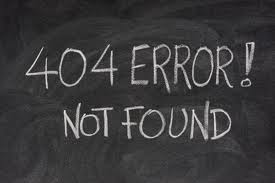In this How To tutorial, you will learn how to create an original custom 404 page for your WordPress website. The 404 or Not Found error message indicates that eh client was able to communicate with the server, but could not find the destination or requested page.
If you have done any sort of browsing online, it is likely you’ve seen a 404 error page before. The 404 error page essentially means the page a web user is looking for cannot be found. The server is still connected, but the page is missing otherwise known as “Not Found.” The 404 error typically means the blogger or website admin has deleted the page, but not all links directing the user to those links, or they have moved the page elsewhere without changing the links.
Because the 404 error page can sometimes result in the user leaving the website entirely, it is easier for a website admin or WordPress blogger to simply create an original custom 404 page so that the user will not leave the website. Keep in mind that a high bounce rate can actually hurt your website ratings and can result in decreased revenue from customers as well as your advertisers. Fortunately it is pretty easy to make a custom page to prevent this problem, or at least reroute your website traffic back to your web page. There are also ways to actually change the URL’s to avoid the 404 error page altogether, however that requires URL rewriting, which can require special server configuration. Because this can be a complicated process, it is much easier for the blogger or web designer to simply learn how to create an original custom 404 page for their WordPress blog. Learning how to create an original custom 404 page is a great way to keep your users on your page instead of leaving confused when they see the error.
How to Create an Orignial Custom 404 Page:
To start, keep in mind that there are some pretty awesome 404 custom pages available online. You can check these out for inspiration or download them from a web designer if they are available for download. You should definitely check out some of these custom pages so you can get the general idea. Most of them are really creative and work toward directing your web followers back to your website. You can even use a custom message to let your reader know that the link they are looking for has been moved, or no longer works. You can also let them know how to get back to your website by directing them to your website side bar as well by adding a link to direct them to your website homepage.
To get started, go to your WordPress theme directory where there is the file called: 404.php. If your dashboard doesn’t already have that file, you will want to create one. Then you can add in any HTML to fit your needs. If you are building a custom 404 page for your WordPress site, make sure you start out by using the default parameters, so your page doesn’t look different than the rest of the design.
<?php get_header(); ?>
<?php get_sidebar(); ?>
<?php get_footer(); ?>
Now you will want to wrap your styling HTML around it. You may even want to copy your page/php file into the 404.php file and just remove the content area to add in your customized tags. You can even use these tags to display archive by months, listing all months:
<?php wp_get_archives(‘type=monthly’); ?>
You can do the same thing for your list of categories, most used tags, recent posts to display and others. You will want to make sure and have all of this sidebar information on your custom original 404 page to use on your WordPress blog. Have fun with the rest of the 404 page. Again, you might want to consider using a few examples found online to help you learn more about how you can add some creativity to your custom original 404 page to decrease your web page bounce rate.
